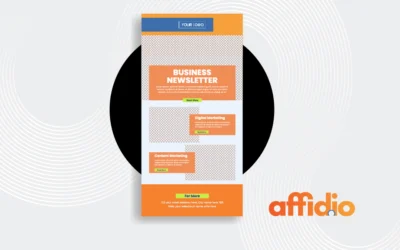Imagine walking into a store, and the sales associate greets you by name, shows you exactly the product you’ve been eyeing online, and offers you a discount on your birthday. Sounds like a scene from a sci-fi movie, right? Step into a new dimension where the ordinary becomes extraordinary.
Customization gets a boost when we focus on the human factor, creating a fit that’s authentically tailored to you. Marketing transforms into a clever magician when AI and data analytics join forces, making each customer’s experience feel intuitive, meaningful, and captivatingly theirs.
The Evolution of Personalization
Personalization has been around for a while, but it was largely limited to generic greetings and segmented email campaigns. The AI-powered engine is revving, and marketers are behind the wheel, driving personalization to uncharted territories where each customer feels seen and heard. Hyper-personalization is the culmination of this evolution, where every interaction, online or offline, is crafted to resonate with the individual on a granular level.
The Power of Data Analytics
So, how do marketers achieve this level of precision? Buried in the stats is the answer we’ve been searching for. By leveraging vast amounts of customer data, including:
of customer data, including:
- Behavioral data: browsing history, purchase patterns, and search queries
- Demographic data: age, location, occupation, and interests
- Psychographic data: personality traits, values, and attitudes
marketers can create detailed profiles of their target audience. As data pours in, AI algorithms kick into high gear, scouring it for trendlines and key patterns. It’s about making connections that count – organizations can fine-tune their approach to speak directly to their audience’s needs.
AI-Driven Hyper-Personalization
With AI at the helm, hyper-personalization becomes a highly efficient and scalable process. Here are some ways AI makes it possible:
- Predictive modeling: AI algorithms predict customer behavior, enabling marketers to proactively offer relevant content, products, or services.
- Real-time processing: Picture this: AI’s high-speed data digestion, serving up intuitive experiences so razor-sharp, so thoughtful, you wonder how it knew exactly what you needed.
- Content optimization: AI-generated content is tailored to individual preferences, increasing engagement and conversion rates.
Real-World Examples of Hyper-Personalization
- Netflix: Uses AI-driven recommendation engines to suggest TV shows and movies based on individual viewing habits.
- Amazon: Based on what you’ve bought and browsed, we bring you the products that are most likely to strike a chord.
- Starbucks: Craft your coffee experience on the go with mobile apps that serve up special deals based on your location, surprise you with treats that fit your taste, and suggest brews you’ll love.
Imagine waking up to a world where products, services, and even entire cities are designed to resonate with your unique preferences – that’s the promise of hyper-personalization.
![]()
As AI and data analytics get smarter, personalization will start to feel eerily familiar, like a friendly algorithm that really gets you. We can expect to see:
- Increased use of IoT devices: Smart home devices, wearables, and autonomous vehicles are about to supercharge personalization by serving up incredibly detailed data.
- Advancements in natural language processing: AI-powered chatbots will become more conversational, allowing for more human-like interactions.
- Further blurring of online and offline experiences: Hyper-personalization will seamlessly merge online and offline interactions, creating a unified customer experience.
A Hyper-Personalized Conclusion
Hyper-personalization is no longer a novelty; it’s a necessity in today’s competitive marketing landscape. With AI and data analytics at their fingertips, marketers can craft experiences that echo individual tastes and, more impressively, act on unspoken desires. Technology’s rapid-fire advancements have made one constant crystal clear – Fine-tuned experiences address the individual, stripping away unnecessary filler. The rules of engagement are about to change, and brands that can pivot quickly will be handsomely rewarded with customer devotion.
Ready to learn even more about marketing? It’s time to hit up Joey Matterhorn for the scoop!



